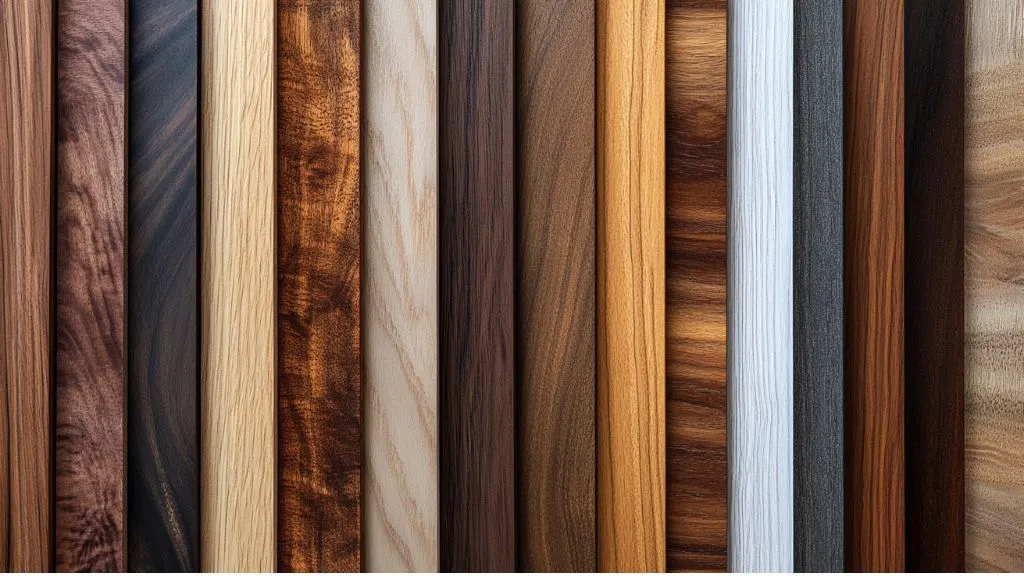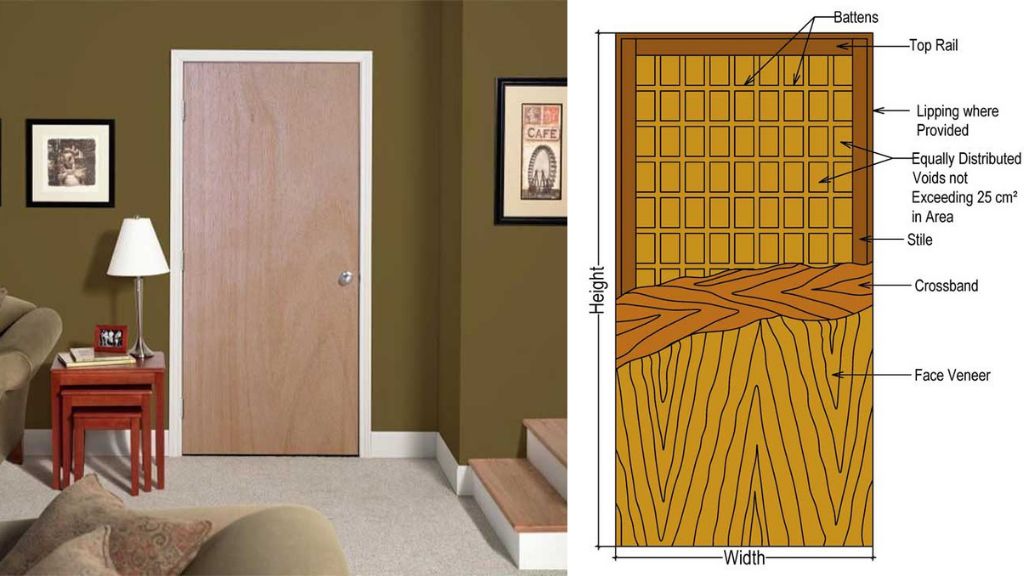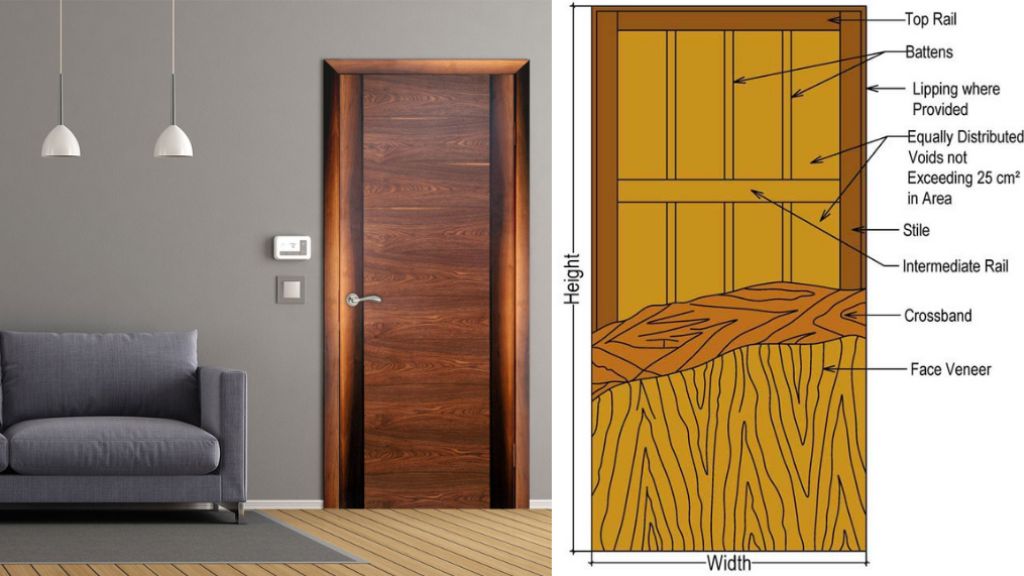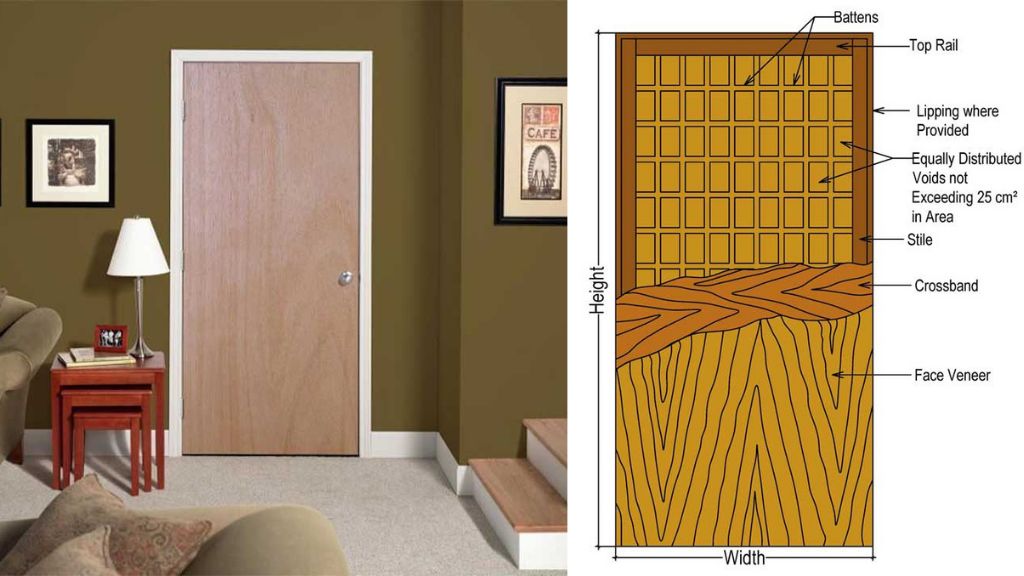Property Geek
We provide the actual and accurate information with unbiased user driven reviews to our viewers, to help them see the best and find the best!
View posts
Flush doors are doors with extremely smooth surfaces that are made by sandwiching blackboard or plywood over a light timber frame. The hollow parts between them are filled with either cardboard or hardwood and are finished via lamination or veneers. So, in simple words and understanding, these are doors that are in trend, smooth, and make a great purchase for door kinds.
Flush doors come with an entirely smooth surface, so much so that, if water was to be splashed on its surface, it would in most cases simply flow off the surface, even without any accumulating. Truly, “the first impression is it’s last here,” think what impression would this leave on guests!
Doors, as little or more as one mind thinks of it, are nevertheless the most important element for any household. This does not only suffice with it being aesthetically pleasing but must also be durable, water and heat resistant must be super strong, and should not wrap with time.
Now that we have a basic understanding of what you can expect from a flush door, let’s dig deep into its pros and cons for a better and learned judgement.
Now that we are aware of the pros and cons of flush doors, let’s get into the crux of this article – the best picks.

These are very popular door types with wood kinds that are mainly hard and mineral composition. It also comes with different combinations of particleboard, faces wood veneer, laminated core, cross band, blockboard, etc – all used to manufacture these Solid Core flush doors.
The width of these Solid Core doors is more than about 7.5 cm of stiles, bottom rails, and top. They also come with sound insulation properties with frames that are made using hardwood and timber wood lipping around them to impart an ample amount of strength and durability to the door.
Adding to this, the width of the wood lipping easily equals the thickness of the core, making it heavy and possessing good strength. This is why these kinds of doors are best used outdoors adhering to their high strength and stability.
The cost of these Solid-core flush doors has a current market value of anywhere between 220-250 rs. per square feet, also depending upon the quality of the materials used for lamination.

As the name suggests, these types of flush doors come with a hollow-core with a supporting honeycomb system used in these doors.
However, quite similar to the solid-core flush doors, they also come with frames on the sides, bottom, top, and intermediate rails that must not be anything more than 7.5cm in width. Its frame consists of stiles with top, bottom rails, and intermediates, that can be easily fixed by using wooden battens on the rails in order to fill the spaces/gaps in between the rails and stiles
The thickness of the plywood should also always be more than 6 mm with plywood sheets and veneers glued to its core under pressure. These are super light in weight, especially when compared to the other types of flush doors, however, are not as strong as the solid-core flush doors.
The cost of these hollow-core flush doors is anywhere between 180-200 rs per square foot.

Last but not the least on our list, these flush door frames are constructed by using plywood battens which are at least 25mm width.
Its structure can be manufactured by simply glueing sheets of plywood and face veneers to both its faces under pressure. The thickness of the plywood sheet is always more than 3mm.
Since these doors are treated chemically and are vacuum-pressed, they can easily possess extreme heat and come with water-resistant properties.
As for the cost, these cellular-core flush doors are easily available anywhere between 150-170 rs per square foot.
| Factor | Flush Door | Wooden Door |
| Raw Materials | These doors are specially manufactured using a timber frame that is covered with plywood on both ends with its hollow center filled with cardboard. These are finished using veneer with fewer joints and perfect flush | Made using wood, these come in a variety of options to choose from – Battened doors, Glazed doors, Paneled doors, etc. Here the wood is joined and the frame is grooved on the inside, with one or more panels. |
| Cleaning Required | These feature plain shutters with no grooves or designs that allow dust to sit on them. With either laminated or veneer finish, therefore you will need to only wipe it leaving a clean surface behind | On the contrary, these door types take comparatively more time to clean as they feature grooves and designs that allow dust to collect |
| Shutter’s Thickness | Usually, the thickness of this door is 25mm, 30mm, and 35mm. However, you can also alter the thickness as per the need | The thickness of this door is 25mm, 30mm, and 35mm. However, again, you can also alter the thickness as per the need |
| Finishing | These doors are mostly finished with veneer with polish over it, or laminated overply, MDF on it | These wooden doors are mostly finished with different kinds of polish, such as oil, wax polishing, paint, laminate fixing, or spirit. |
| Advantages | These are inexpensive, and do not split, rot, or peel with no need for periodic maintenance. These kinds are also resistant to stains, crashes, and scratches, are super easy to clean and are resistant to termites | These wooden doors are easy to modify, and adjusted to any needed size. They are available in multiple designs and can also be craved to add more texture to the doors |
| Disadvantages | They are manufactured this way so they must be provided with the exact size or it becomes way too hard to re-size | These are prone to termite attack as compared to the other kinds like teak doors |
| Strength | These do not have good strength capacity but not as good as the wooden doors | These have better strength when compared to the flush doors and come with a better lifespan |
| Appearance | These are cost-effective but aren’t aesthetically appealing | They are available in multiple aesthetically appealing designs |